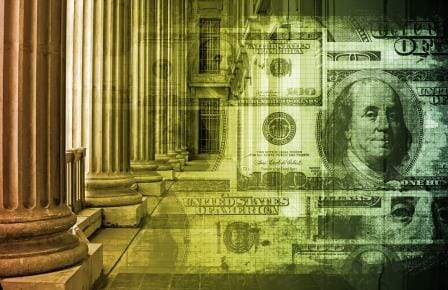A US regulator supports several banks involved with the proposal of a new stablecoin. That association expects that other financial institutions will join them this year.
The US Federal Deposit Insurance Corporation (FDIC) supports several banks that plan to launch their own stablecoin.
The association consists of several financial institutions like Synovus Bank, the 48th largest American bank by asset volume. The other members are New York Community Bank, FirstBank, and Sterling National Bank.
USDForward (USDF), the stablecoin of the bank association, builds on public blockchain Provenance and adheres to regulatory standards of the country.
The group said that the availability of USDF on a public blockchain means a wide range of applications for the stablecoin. They pointed out that banks and their customers can use them for peer-to-peer and business-to-business money transfers. The financial entities also mentioned that they allow paying invoices and financing supply chains.
The banks did not specify whether the FDIC would also back the reserves of USDF. They stated that one of their objectives is to get other financial institutions to join them this year.
The association said they intend to have an alternative to stablecoins issued by companies. Those digital assets have emerged to maintain a stable value in parity with the US dollar or another fiat currency. In contrast, the value of Bitcoin and other decentralized cryptocurrencies depends on the supply and demand in the market.
It seems that banks want a share of the not insignificant stablecoin market, which reaches USD 171 billion. Companies like Tether (USDT) and Circle’s USDCoin (USDC), with a market capitalization of USD 78 billion and USD 44 billion, respectively, monopolize that sector.
Some American Regulators Support Stablecoins, but Others Do Not
The above announcement by US-based banks reveals that some American regulators approve stablecoins. However, other government agencies have pointed out that stablecoins may pose some risks to the economic system.
The president of the Boston Fed, Eric Rosengren, made one of those claims in June 2021. He said that Tether and other stablecoins are on a list of challenges to financial stability.
The US Securities and Exchange Commission (SEC) and the US Department of the Treasury also commented on stablecoins. They stated that those digital assets had grown so much that they are a systemic risk to the US dollar and the American economy.
Other US agencies like the FDIC have said that stablecoins could become a common means of payment in the future. However, they have expressed that there have to be regulations on them to mitigate the risks that they entail.
The FDIC and other agencies consider that the use of stablecoins for traditional payments could soon increase at the individual and institutional levels.
The CEO of Circle, Jeremy Allaire, predicted that massive adoption could enhance the growth of stablecoins this year. That firm is one of the developers of USDC, the second stablecoin with the highest market capitalization worldwide. Therefore, it is only a matter of time before seeing what 2022 will bring to that sector.
By Alexander Salazar











